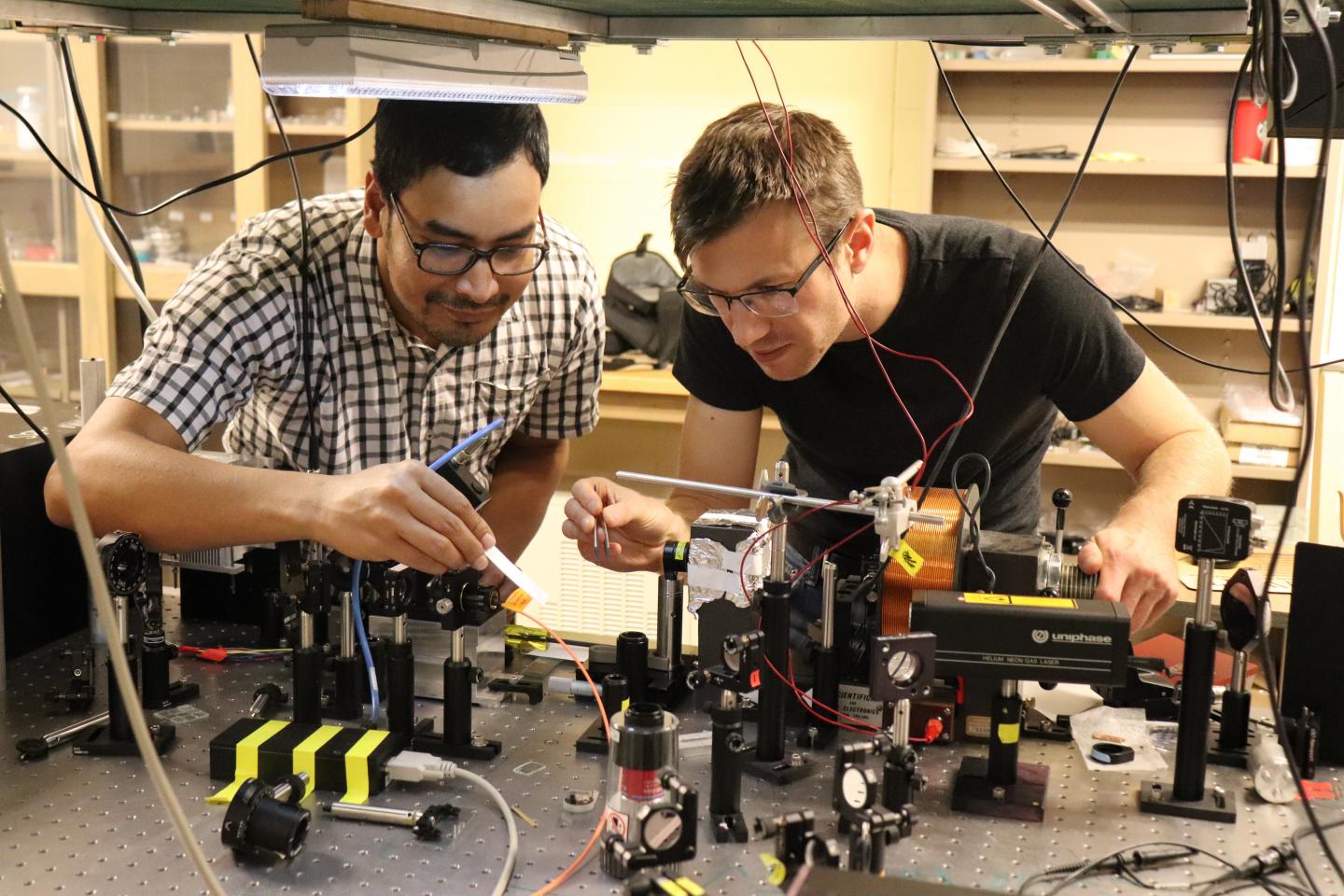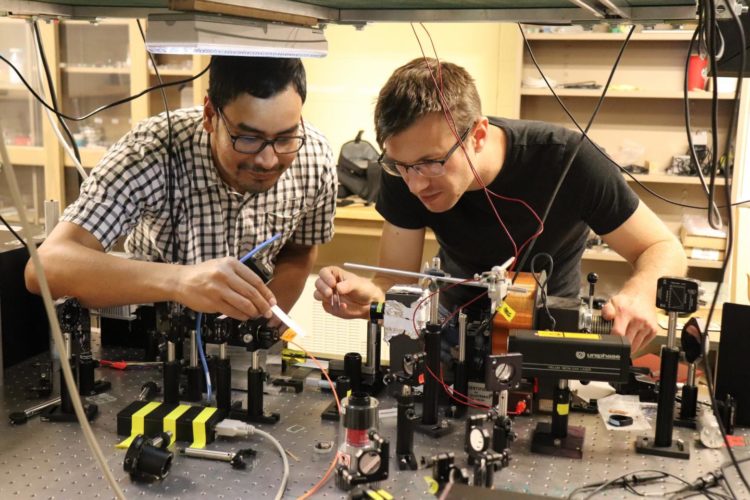
Credit: Joshua Walker
A University of Wyoming researcher and his team have shown that the spin Seebeck effect (SSE) can be used to detect light across a broad optical range – ultraviolet through visible to near-infrared. This work has future implications on novel spin current-based technologies.
The SSE is one of three known ways to generate spin current, or a net movement of particle magnet moments. The SSE occurs when a thermal gradient is created across a material and, depending on how it is measured, results in an electrical potential. However, unlike its electrical analog, the SSE has been generated not just in ferromagnetic metals – such as cobalt, iron and nickel — and semiconductors, but also in magnetic insulators, making it widely applicable.
“The work we just published examined the possibility of using the spin Seebeck effect for light detection,” says William Rice, an assistant professor in UW’s Department of Physics and Astronomy. Since the spin Seebeck effect is based on creating a temperature difference, we are exploiting this property to produce a device that detects light through an unconventional route — spin current generation and detection, rather than electrical carrier generation and detection.”
Rice was corresponding author of a paper, titled “Broadband Optical Detection Using the Spin Seebeck Effect” which was published Sept. 24 in Physical Review Applied, a journal that publishes high-quality papers that bridge the gap between engineering and physics, and between current and future technologies. Physical Review Applied publishes papers from both the engineering and physics communities, in academia and industry.
Subash Kattel, a UW graduate research assistant, was the paper’s lead author. Kattel will receive his Ph.D. in condensed matter physics next spring, and earned his master’s degree in physics from UW in 2016. Joseph Murphy, a former UW postdoctoral research associate in physics and astronomy, was the paper’s second author. Rice says the study was conducted over two years.
Spin current generation, detection, transport and manipulation are key components of a new generation of spin-based devices that have both spin and electrical characteristics. Unlike traditional all-electrical devices, these architectures use a flow of spins, or spin-current density, to transmit information and/or energy in lieu of the carrier charge.
“There are no pure spin-based devices we currently use in our everyday lives. However, hybrid spin devices abound,” Rice says. “These include hard drives, switchable optical polarizers, magnetic random access memory and certain types of transistors.”
Pure spin currents are the magnetic analog of electrical currents. Oriented spin can move in a direction in a solid just as charges can, Rice says. Oriented spin is the magnetic component of fundamental particles, such as electrons and protons. Charges are the electrical component of fundamental particles, he adds.
However, unlike electrical current — which interacts with the host solid and, thus, loses energy through the heating of that lattice — spin currents have little to no interaction with the environment. Rice says his team expects that spin currents could be an excellent way to transmit energy and information without significant loss.
“As we learn more about how to create and detect spin currents, new technologies are sure to emerge,” he says. “This proof-of-concept sets the stage for trying different device geometries and materials to increase the overall device sensitivity. Making our devices more light sensitive is critical for them to become competitive with current state-of-the-art detectors.
“More broadly, the generation, detection and manipulation of spin currents are all still in their infancy, so it is challenging to say what, if anything, they can be used for technologically,” he continues. “However, significant ongoing research efforts by both academic researchers and companies are focused on pushing the envelope of this technology to see if new applications and unique behaviors emerge.”
###
David Ellsworh, ATHENA Lab lead at the U.S. Army Combat Capabilities Development Command (CCDC) Aviation and Missle Center in Colorado Springs, Colo.; Jinjun Ding a graduate assistant at Colorado State University (CSU); Tao Liu, a postdoctoral fellow at CSU; Peng Li, an assistant professor of electrical and computer engineering, and a former research associate at CSU; and Mingzhong Wu, a professor of physics at CSU, also contributed to the paper.
UW’s School of Energy Resources, the U.S. Department of Energy and the National Science Foundation funded the research.
Media Contact
William Rice
[email protected]
Original Source
http://www.
Related Journal Article
http://dx.





